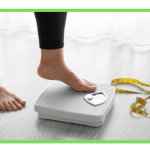CGMS now allow real-time tracking of blood sugar, so people with diabetes do not have to test often with finger pricks. Even so, many new patients wonder about the comfort of continuous glucose monitoring and whether using it is painful.
Telling patients about the possible discomfort or pain of using a CGM allows them to be ready and feel more comfortable during the process.
In this article, we will look at how CGM is inserted, the experiences of pain, how to manage problems and correct some false ideas related to CGM pain.
Table OF Content
What Happens During CGM Insertion?
Although placing the CGM sensor is easy, users might still feel nervous when they first use one because of the small needle. A typical CGM system normally supplies an insertion applicator that helps to insert the sensor easily and safely.
Today’s CGMs like Dexcom G6 and FreeStyle Libre have spring-loaded applicators that quickly place the sensor filament just under the skin, so it hurts less. The real needle is very slim, thinner than an insulin injection, and it disappears right after it is inserted. Many people say that they feel a small pinch or brief sting when the needle goes in.
Once inserted, the sensor stays under the skin for 7 to 14 days, depending on the type and constantly checks blood glucose levels without requiring extra needle sticks. Insertion only needs to be performed once every week or two, so the pain does not normally last for very long.
Does the Sensor Insertion Hurt?
Pain from CGMs can be quite different for everyone, but the majority of users feel little or no pain while putting the sensor in. It is set up to work quickly and with as little difficulty as possible. Here are several things that can play a role in how someone feels pain:
Needle Size and Speed of Insertion
They use needles that are finer than normal injection needles, so they cause less harm to the tissue. The swift movement of the needle by spring is meant to limit the amount of time the skin is pierced, which brings down the pain.
Location of Insertion
Placing the sensor in a sensitive area may cause more tossing and turning. There is less sensation in areas with more fat and fewer nerves, like the abdomen or the back of the arm. People might notice more pain when the treatment is delivered to areas where skin is less thick or close to muscles.
Individual Pain Threshold
There is no single pain tolerance that fits all. What feels only light to one person could be more noticeable and uncomfortable for someone else. Trying to avoid pain by being careful can make the sensations seem stronger.
Experience Over Time
People usually find that their first time using condoms more difficult because they are nervous, yet with experience, using condoms gets much simpler.
Overall, while discomfort can occur, huge amounts of pain are rare and tend to end shortly.
What About Pain During CGM Wear?
After putting on the CGM, many people soon stop noticing it since it’s light and not irritating. There are users who experience a little irritation or discomfort while using these.
Skin Sensitivity and Irritation
An adhesive patch secures the attachment. For a few users, a small amount of irritation, redness, or itching might appear near the treatment area. Most of the time, the reaction is caused by being sensitive to the adhesive or the sensor, which causes a bit of inflammation. Either using hypoallergenic tapes or barrier wipes can make this less likely.
Pressure or Tugging Sensations
The slight protrusion of the sensor from the skin occasionally leads to the sensor getting caught on something which may mildly hurt the user. Properly choosing where to put the sensor and making sure it’s protected with a patch cover can help with this issue.
Movement and Physical Activity
Intense exercises can sometimes cause small discomfort where the sensor is located. It is usually recommended that users place sensors in places that are not likely to become damaged by bending or rubbing.
Wearing pressure ulcers usually causes only mild discomfort, which can be controlled with correct skin care.
How to Minimize Pain and Discomfort When Using a CGM
You can control how discomfort from CGMs impacts you using simple approaches.
Preparing the Skin Properly
Cleaning the area with alcohol and letting it dry positively affects the risk of infection and skin irritation. Although rubbing in numbing cream is optional, some people do it to help manage any pain they experience.
Choosing Optimal Sensor Sites
Putting the silicone on an area with enough fat and little movement reduces the discomfort while inserting and wearing it. Injections are most often recommended in the abdomen or upper arm. Avoid locations with damage, bruising, or any form of inflammation.
Using Numbing Agents
Highly sensitive persons have the option to use numbing sprays or creams like lidocaine prior to getting an instrument inserted. In fact, most people feel it is a waste of time.
Proper Application Techniques
Following the manufacturer’s instructions carefully lowers the risk of painful sensor placement problems.
Monitoring Skin Reactions
If both bother the skin, removing the sensor and applying comforting creams is the best solution. If skin problems last for a while, you should consult medical professionals.
Common Myths About CGM Pain
One reason some do not try CGM is that they believe it will be painful. Let’s address some popular myths about them:
CGMs Hurt as Much as Finger Pricks
Actually, inserting CGM devices usually causes less pain than finger pricking many times for blood sugar testing. The fast needle insertion is easier to tolerate than the many lancet pricks done every day.
Sensors Must Be Inserted Deeply and Painfully
They are inserted only a little under the skin, making the pain and risks less serious.
Wearing a CGM is Uncomfortable and Restrictive.
Most people using CGMs notice little pain and like that they don’t need to regularly stick their fingers for tests.
Getting rid of these myths helps people who use CGM treat their expectations more realistically.
When to Consult a Healthcare Provider About CGM Pain?
Usually, the pain is not severe, though some people might experience more trouble and need to get medical advice.
- Severe pain that continues over a long period at the place where the catheter is inserted
- Evidence of infection, such as swelling, pus and warmth
- Allergic reactions to adhesives can cause blisters or rashes.
- A common reason for sensors not to work is poor placement or related skin issues.
Doctors and nurses can suggest other solutions, recommend medicated adhesives or suggest ways to feel more comfortable.
Conclusion
Generally, CGMs are built to be user-friendly and not cause significant discomfort. The most common issue is taking a quick pinch of skin during insertion, but after that, most people soon forget the device is there.
Good preparation, choosing the right place to install, and proper skills reduce the chances of skin pain and rashes. The good things about CGM monitoring are much bigger than the momentary and gentle pain people experience. At Healify Now, we are here to assist you with everything you need to know about CGM. Contact us today to get the best consultation from our experts.
FAQs
1. Does everyone feel pain when inserting a CGM?
Most people find that the implant is not very painful to insert. Sensitivity to pain is different for everyone and the process takes little time using only small needles
2. Can I use numbing cream before inserting a CGM sensor?
You can put on topical numbing cream if it helps, but most patients do not require it.
3. How long does the insertion pain last?
Insertion pain is usually brief and happens within seconds while the needle is placed.
4. Can skin reactions occur if I constantly wear a CGM?
Some users may feel irritation or allergic reactions to the adhesive, but hypoallergenic and protective barriers can be applied.
5. Should I see a doctor if the CGM site is painful?
Consult your healthcare provider immediately if the pain does not improve, gets worse, or looks like an infection.
Conclusion
If you understand CGM pain, you can better decide about your management of diabetes. Some slight trouble with insertion is natural, but the technology assists in reducing any discomfort and benefits your general well-being. If you would like to learn more or have questions, Healify Now provides a free consultation to help with CGMs and pick the best one for you. We have a dedicated care team that is here to help you all the way through.



